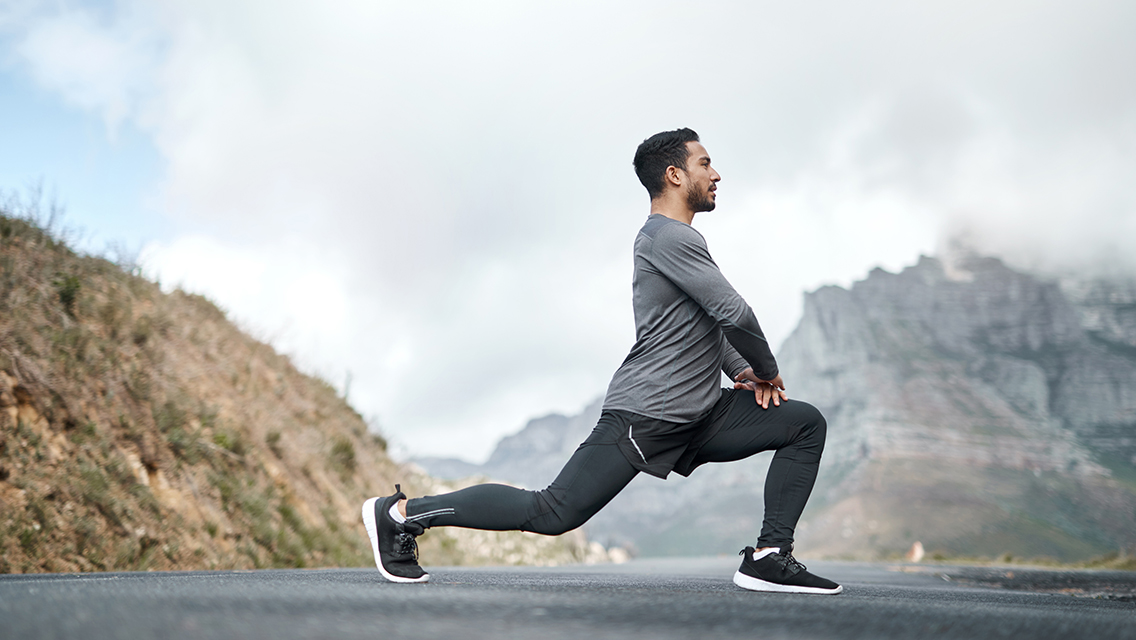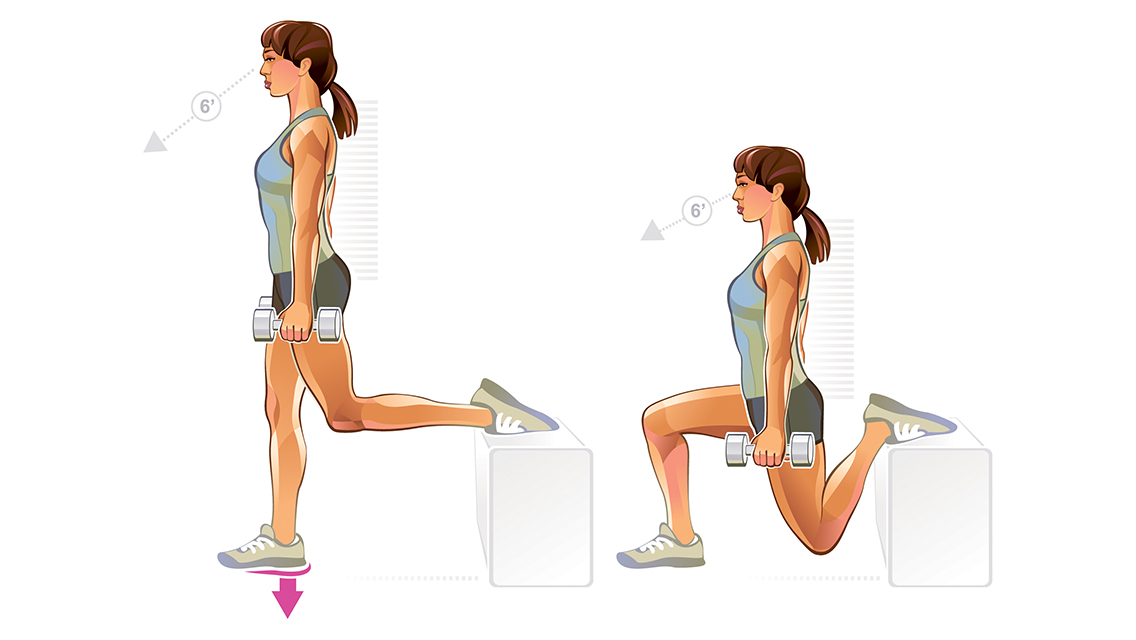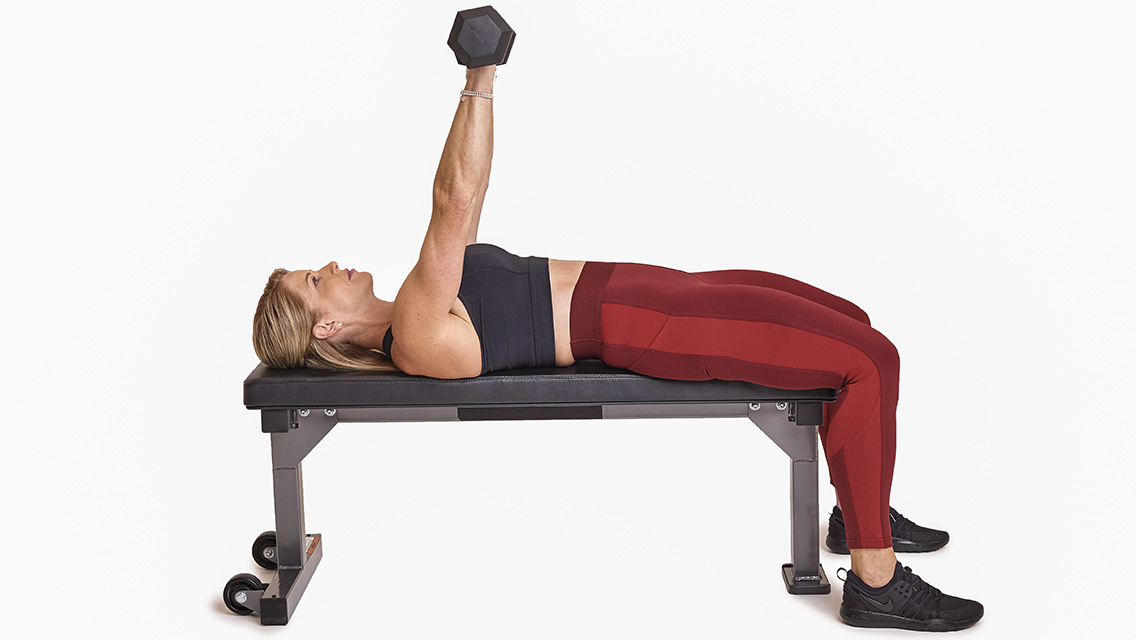Explore the moves:
| Series 1 | Series 2 |
You might not think of your derrière as the key to health and fitness. But research shows that a strong posterior chain — all the muscles that run down the back of your body, from your traps to your calves — enhances overall ease of movement and athletic performance, whether you’re swinging a golf club, hefting barbells, or simply getting out of a chair.
Once considered a purely aesthetic pursuit, glute and back training is now widely recognized as one of the most important things you can do to move well and stay injury-free.
“Our posterior chain is designed to propel us, stand us upright, and slow us down. But if these muscles are not in a correct position to perform their function, you’re going to experience a feeling of weakness,” says Eric Goodman, DC, founder of Foundation Training.
Most of us need to home in on the posterior chain, he explains: It’s an oft-forgotten set of muscles that suffers from time spent in the convenient postures of the modern era. Slumping in chairs, driving, and lounging on the couch have literally moved the origin and insertion points of our muscles, putting them at a disadvantage when called to do their job.
In particular, many people are unable to fire their glutes; this “glute amnesia” occurs because the hip joint is externally rotated away from the femur, causing the glutes to sit in a shortened position. Over time, says Goodman, your glutes “stop functioning as powerhouses and start functioning as cushions.”
He designed the following two-month training program to revive and strengthen your posterior chain. This is not just about addressing one weak muscle, though: It’s about correcting your biomechanics from head to toe. In just eight weeks, you can see a significant improvement in your body’s ability to hold itself up, carry itself, find its center of gravity, and move safely and efficiently.
Moreover, these moves will help you develop and maintain more space among your 30-plus vertebrae, leading to less wear and tear on your nerves. You will also unlock power, force, and gracefulness.
It may sound like magic, but really, posterior-chain training comes down to good science: “When you find your weak spots and strengthen them, it becomes possible for powerful muscles to communicate better” and work better together, explains Goodman.
The Plan
This eight-week program follows a six-day split of alternating days. You’ll perform the Series 1 exercises on Mondays, Wednesdays, and Fridays and the Series 2 exercises on Tuesdays, Thursdays, and Saturdays. Each workout takes 20 minutes or less to complete. You can use each series as a standalone workout. Or, if you want to incorporate it into an existing training plan, do these moves as part of your warm-up.
A Note on Breathing
For all the exercises, you’ll practice what Goodman calls “decompression breathing.” With each inhale, breathe deeply into your rib cage to actively lift and widen it in all directions. Visualize your vertebrae extending away from each other as you lengthen your spine. With each exhale, aim to maintain this feeling of vertebral separation.
Series 1: Perform on Mondays, Wednesdays, and Fridays.
These three standing poses are intended to wake up your posterior-chain muscles and expand your axial skeleton, rib cage, and spinal column. When holding these poses, try to keep the sensation of the stretch as comfortable and symmetrical as possible. Hold each pose for 30 to 60 seconds, or about six deep breaths. Perform three repetitions of each exercise in the series before moving on to the next exercise.
1. The Founder
- Stand with feet about 2 feet apart, knees softly bent and the pads and heels of your feet firmly planted. With a neutral spine and weight in your heels, hinge at your hips. Raise your chest slightly.
- Lift your arms behind you, palms facing forward. You’ll feel tension at your lower spine and hamstrings. Hold for about six breaths.
- On an exhale, bring your arms forward, straight in front of your shoulders, and fingertips together. This increases the tension in your lower back and hamstrings. Hold for about six breaths.
2. Lunge Decompression
- Start in a split stance, hips and feet squared forward.
- With fingertips on your sides and keeping your neck long, try pulling your weight away from the floor from the middle of your torso. Take about six deep breaths. You’ll feel this in your front hamstrings and glutes.
- On an exhale, bring your arms overhead and press your fingertips together. Take about six deep breaths in this position.
- Repeat with the opposite leg forward.
3. The Woodpecker
- Start in a split stance, then hinge at your hips. Lift your chest slightly, but don’t hyperextend your back.
- Extend your arms behind you, with elbows softly bent and palms facing forward. Take about six deep breaths. You’ll feel this in the lower back and the hamstrings of the front leg.
- Inhale deeply, then exhale as you bring your arms forward. Press your fingertips together. Take about six deep breaths in this position.
- Repeat with the opposite leg forward.
Series 2: Perform on Tuesdays, Thursdays, and Saturdays.
These poses strengthen your posterior chain as well as your anterior core, which helps stabilize the hips and spine and control spinal rotation and extension. Hold each pose for 30 to 60 seconds, or about six deep breaths. Perform as a circuit for three rounds.
1. Eight-Point Plank
- Lie on your belly with elbows directly under your shoulders and palms on the floor. Keep your feet at about hip width and toes and knees on the floor. The goal is to maintain these eight contact points (hands, elbows, knees, feet) throughout the exercise.
- Exhale as you pull your elbows, knees, and toes toward the center of your body (they won’t actually move) and engage your core to lift your belly off the floor.
- Hold the back of your rib cage as high and wide as possible without dropping your head down. Stretch as long as you comfortably can from elbows to knees. Hold for about six breaths.
2. Prone Decompression
- Lie flat on your belly. Extend your arms straight out in front of you as far forward as possible and press your fingertips into the floor. Lift your elbows off the floor. Squeeze your knees together and keep your toes on the floor.
- Exhale as you gently lift your forehead and nose off the floor. Your chin should stay down and tucked toward your neck; do not try to look ahead of you. Use your lats to lift a little higher while keeping your core engaged. Keep your knees touching the floor and squeezing together.
- Hold this lifted position for about six breaths, focusing on expanding the back of your rib cage with each inhale and, with each exhale, keeping the height you gain.
3. Anchored Bridge
- Lie on your back with arms at your sides, palms facing down, and fingertips touching the floor. Slightly bend your knees, keeping your heels in contact with the floor and maintaining a neutral spine. Keep big toes, knees, and thighs as close together as possible.
- Exhale and engage your core as you lift your hips just a couple of inches off the floor while squeezing your knees together. Dig your heels into the floor and imagine pulling them toward your hips. Hold this position for about six breaths.
- Exhale as you raise your arms off the floor and toward the ceiling, bringing your fingertips together. Hold for about six breaths.




This Post Has 0 Comments